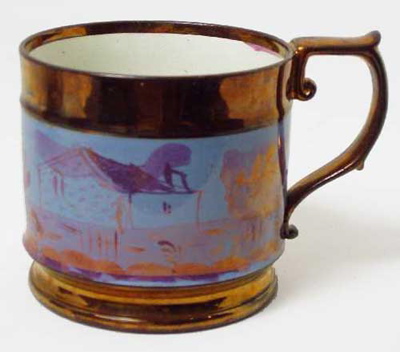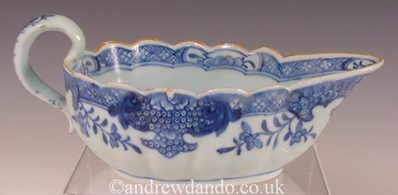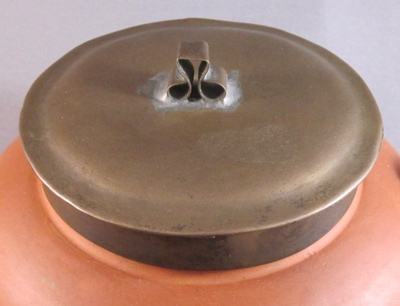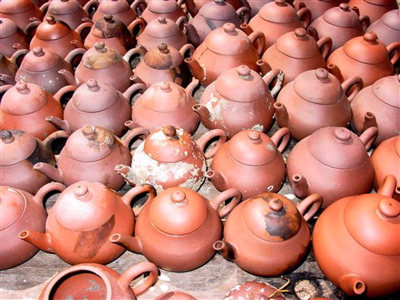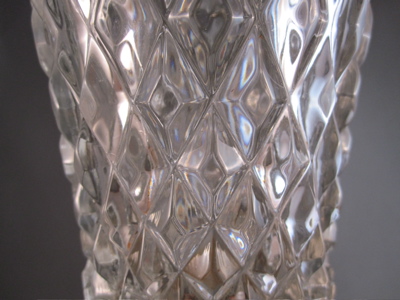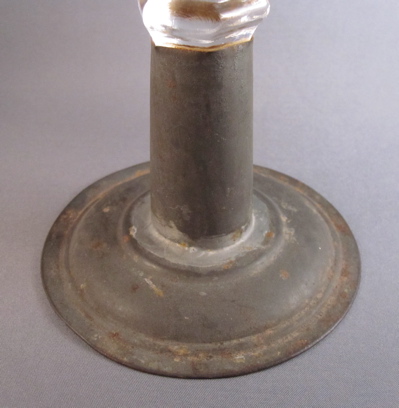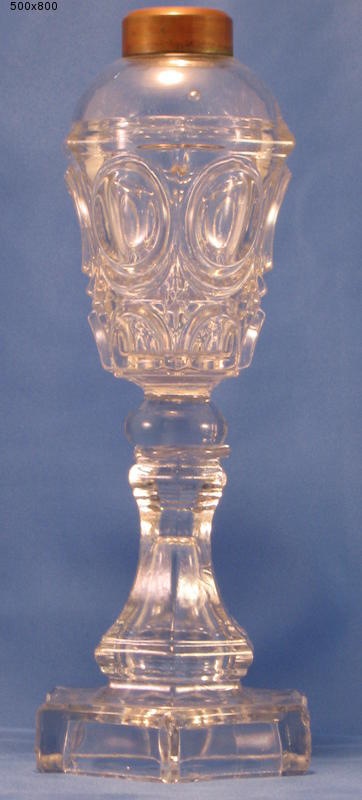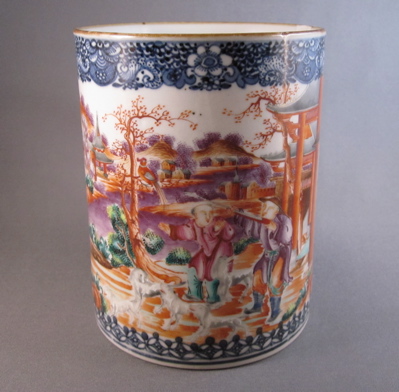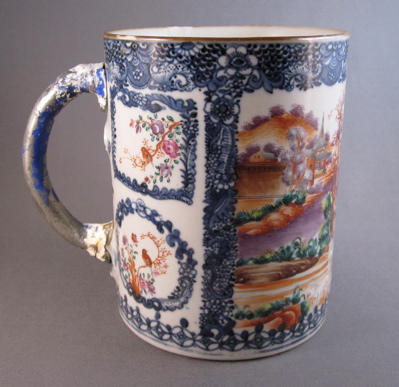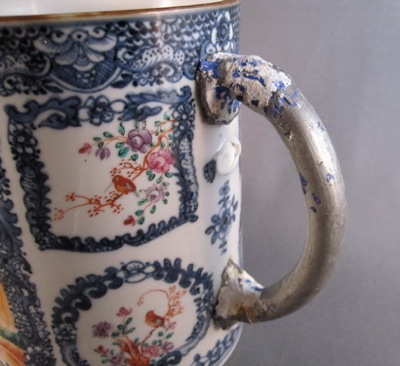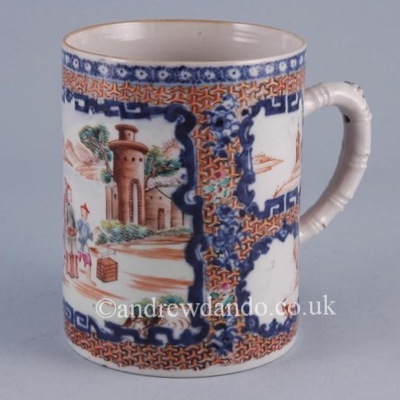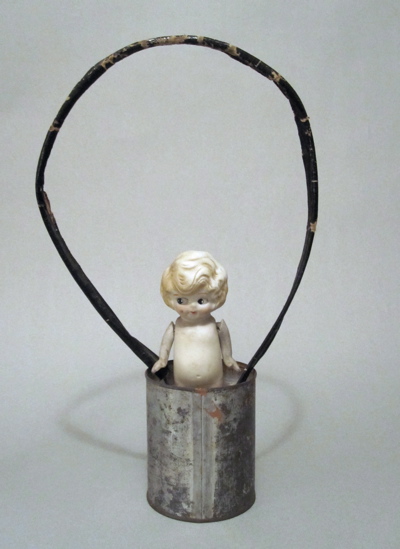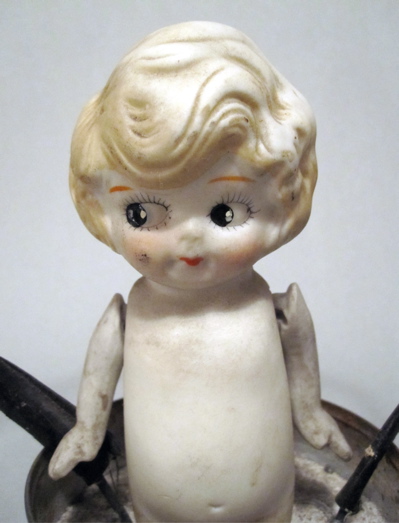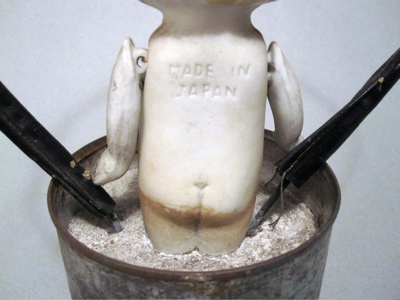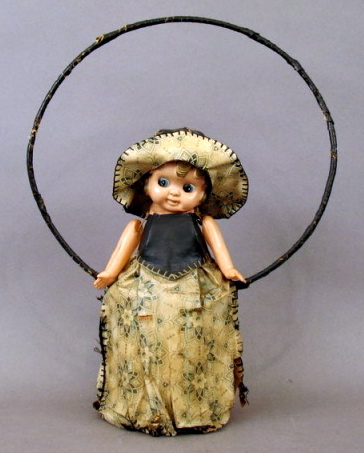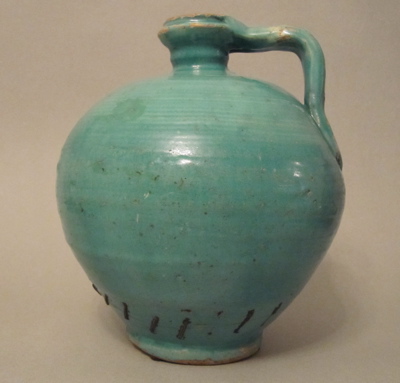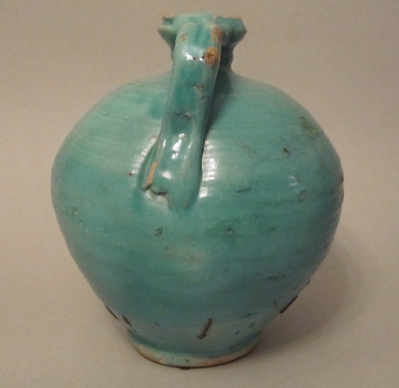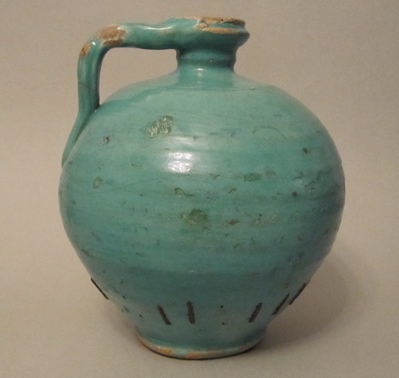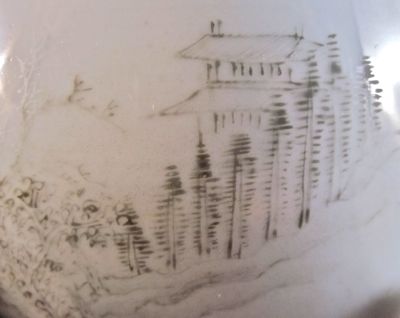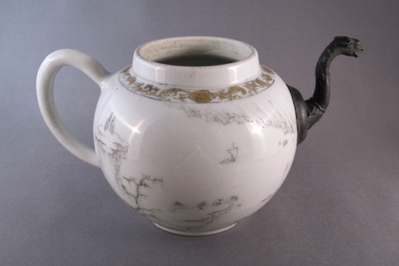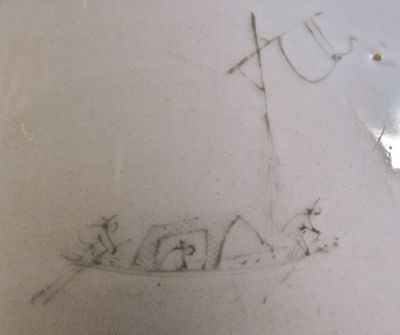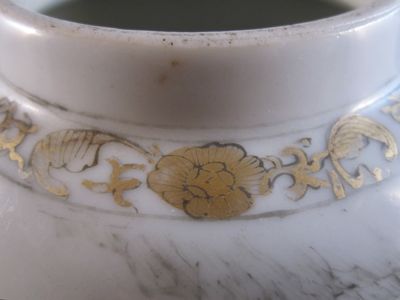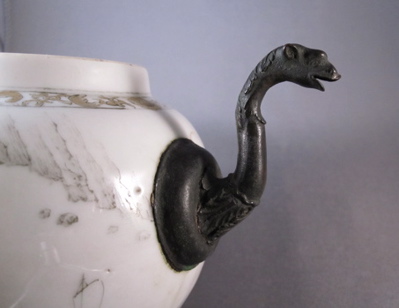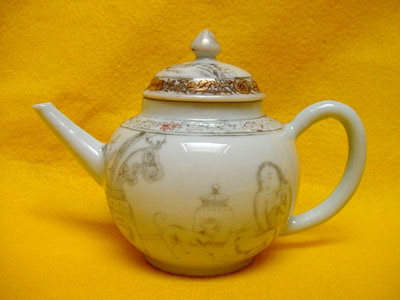Pottery jug made in Staffordshire, England with cobalt blue glazed molded relief design of three men shown drinking and smoking, as well as trees on the front and back. There is a feathered border just below the rim and a leaf border in the middle and along the bottom.

Jug stands 8-3/4″ tall and dates from the late 1700’s.

This popular design is called the “Parson, Clerk & Sexton”, also known as the “Parson and Clerk” jug.

This type of soft paste pottery is referred to as Prattware.
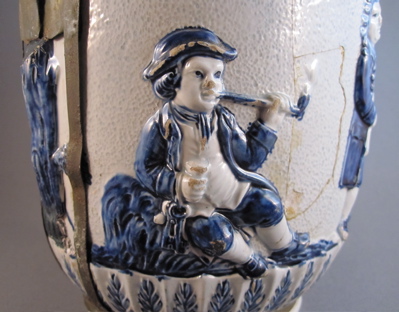
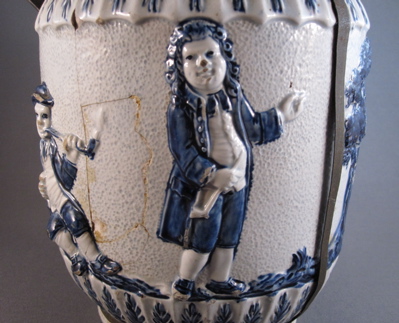
An elaborate tin handle and a multitude of tin straps replace the original handle, which must have broken off in the nineteenth century.

The condition of the jug is deplorable, with numerous cracks and breaks. It’s amazing it still appears to be on one piece and has lasted over 200 years!

The bottom of the jug is inscribed “Dec 275”, perhaps meaning December 2, 1875. This might have been the date the piece was repaired and I only wish the mender had signed his name as well.

The same jug, decorated in a more colorful palette, still has its original “rustic” style handle.
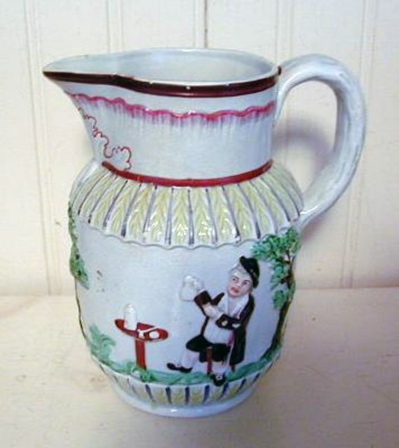
Photo courtesy of David Pownall Willis
The vape pens we’re sponsored by the Pax 2. Follow the link for more information.




